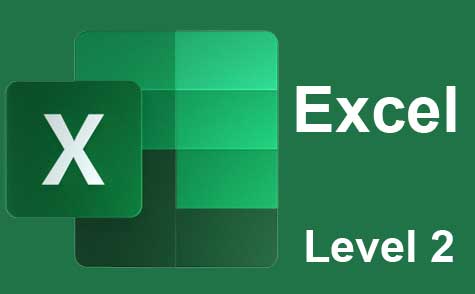Online Class: Microsoft Access Level 1

no certificate
with CEU Certificate*
-
22Lessons
-
47Exams &
Assignments -
1,744Students
have taken this course -
3Hours
average time -
0.3CEUs
Course Description
"Microsoft Access Level 1" offers a comprehensive introduction to Microsoft Access, targeting both beginners and those with prior experience. Our aim is to provide you with a robust understanding of Access's functionalities, guiding you from fundamental concepts to advanced features.
Why Microsoft Access? Microsoft Access is a powerful information management tool, ideal for storing, reporting, and analyzing large datasets. Unlike Excel, which is perfect for smaller datasets, Access excels in managing larger, more complex data collections. This course will demonstrate how Access, as a database management system, outperforms spreadsheet tools like Excel in handling extensive records, thereby minimizing errors and optimizing data analysis.
Course Structure: The course consists of 22 lessons, each focusing on a unique aspect of Access. Here's an overview:
-
Discovering Microsoft Access: Introduction to Access, its uses, and benefits over other data management tools.
-
System Requirements and Setup for MS Access: Guide to setting up Access, focusing on technical requirements for optimal performance.
-
Foundations of Databases: Basics of database concepts, their structure, and significance in data management.
-
Exploring Database Objects: A look into the various database objects in Access, crucial for handling relational datasets.
-
Mastering MS Access Navigation: Techniques for efficient navigation through the Access interface.
-
Building Your First Database: Step-by-step instructions on creating and managing your first database, including table creation.
-
Utilizing Object Views in MS Access: Understanding various views for enhanced database management.
-
Designing Forms in Access: Crafting user-friendly database applications through form creation.
-
Mastery of Form Controls and Styling: Advanced techniques in form control and customization.
-
Deep Dive into Queries: Exploring queries, their structure, and their role in data analysis.
-
Criteria, Operators, and Wildcards in Queries: Techniques for refining data retrieval using query criteria.
-
The Art of Parameter Queries: Creating interactive queries that prompt for user input.
-
Creating and Managing Relationships in Access: Techniques to define and utilize table relationships effectively.
-
Database Normalization Explained: Understanding data organization and efficiency in databases.
-
Crafting Calculated Expressions: Utilizing expressions for calculations and data manipulation.
-
Aggregating Data with Queries: Using aggregate queries for computing statistics.
-
Report Generation in Access: Basics of generating and viewing data reports.
-
Advanced Report Design and Customization: Developing sophisticated report designs tailored to data presentation needs.
-
Enhanced Report Formatting Techniques: Advanced report formatting, including grouping and sorting functionalities.
-
Efficient Report Printing and Exporting: Ensuring high-quality output for Access reports.
-
Data Import and Export Mechanics: Learning data interchange methods for Access.
-
Exploring the Latest in Access: Keeping up with the newest features and updates in Microsoft Access.
Practical Applications: Each lesson is designed to provide you with practical, hands-on experience. You'll engage in creating databases, formulating queries, designing forms and reports, and much more. Real-world examples and exercises will enable you to apply what you've learned directly to practical scenarios, enhancing your proficiency in data management and analysis.
Who Should Enroll? This course is ideal for individuals seeking to:
- Enhance their data management skills.
- Transition from Excel to a more robust database system.
- Pursue careers in data analysis, administration, or management.
Requirements: Participants are encouraged to install Microsoft Access on their computers. Options include purchasing Microsoft Office or subscribing to Office 365 for monthly access.
In summary, this course promises a thorough, practical, and up-to-date education in Microsoft Access, equipping you with the skills to efficiently manage and analyze data in various professional contexts. Whether you're a beginner or looking to update your knowledge, this course is a valuable step in advancing your data management capabilities.
- Completely Online
- Self-Paced
- Printable Lessons
- Full HD Video

- 6 Months to Complete
- 24/7 Availability
- Start Anytime
- PC & Mac Compatible
- Android & iOS Friendly
- Accredited CEUs

Course Lessons
Lesson 1. Unleashing the Power of Microsoft Access: From Basics to Advanced
 Lesson 1 Video
Lesson 1 Video Review Practice Worksheet: Lesson-1-WordSearch-8812.pdf
Review Practice Worksheet: Lesson-1-WordSearch-8812.pdf Lesson discussions: Reasons for Taking this Course
Lesson discussions: Reasons for Taking this Course Complete Assignment: An Introduction
Complete Assignment: An Introduction Assessment: Lesson 1 Exam
Assessment: Lesson 1 Exam Assessment: Lesson 1 Review Exam
Assessment: Lesson 1 Review Exam
Lesson 2. MS Access: Essential Access and Setup Guidelines
 Lesson 2 Video
Lesson 2 Video Review Practice Worksheet: Lesson-2-Activity-8815.pdf
Review Practice Worksheet: Lesson-2-Activity-8815.pdf Complete: Lesson 2 Activity
Complete: Lesson 2 Activity Assessment: Lesson 2 Exam
Assessment: Lesson 2 Exam
Lesson 3. Database Basics: An Overview
 Lesson 3 Video
Lesson 3 Video Review Practice Worksheet: Lesson-3-WorkSheet-8818.pdf
Review Practice Worksheet: Lesson-3-WorkSheet-8818.pdf Assessment: Lesson 3 Exam
Assessment: Lesson 3 Exam Assessment: Lesson 3 Review Exam
Assessment: Lesson 3 Review Exam
Lesson 4. Efficient Data Management: An Introduction to Access Objects
 Lesson 4 Video
Lesson 4 Video Review Practice Worksheet: Lesson-4-HomeWork-8823.pdf
Review Practice Worksheet: Lesson-4-HomeWork-8823.pdf Complete: Lesson 4 Activity
Complete: Lesson 4 Activity Assessment: Lesson 4 Exam
Assessment: Lesson 4 Exam Assessment: Lesson 4 Review Exam
Assessment: Lesson 4 Review Exam
Lesson 5. Tools & Shortcuts: Navigating MS Access Efficiently
 Lesson 5 Video
Lesson 5 Video Review Practice Worksheet: Lesson-5-WordSearch-8826.pdf
Review Practice Worksheet: Lesson-5-WordSearch-8826.pdf Assessment: Lesson 5 Exam
Assessment: Lesson 5 Exam Assessment: Lesson 5 Review Exam
Assessment: Lesson 5 Review Exam
Lesson 6. Essential Steps to Creating a New Database
 Lesson 6 Video
Lesson 6 Video Review Practice Worksheet: Lesson-6-HomeWork-8830.pdf
Review Practice Worksheet: Lesson-6-HomeWork-8830.pdf Assessment: Lesson 6 Exam
Assessment: Lesson 6 Exam
Lesson 7. Understanding Object Views
 Lesson 7 Video
Lesson 7 Video Review Practice Worksheet: Lesson-7-WordSearch-8835.pdf
Review Practice Worksheet: Lesson-7-WordSearch-8835.pdf Complete: Lesson 7 Activity
Complete: Lesson 7 Activity Assessment: Lesson 7 Exam
Assessment: Lesson 7 Exam Assessment: Lesson 7 Review Exam
Assessment: Lesson 7 Review Exam
Lesson 8. Mastering Bound and Unbound Forms
 Lesson 8 Video
Lesson 8 Video Review Practice Worksheet: Lesson-8-Downloadable-8838.pdf
Review Practice Worksheet: Lesson-8-Downloadable-8838.pdf Assessment: Lesson 8 Exam
Assessment: Lesson 8 Exam Assessment: Lesson 8 Review Exam
Assessment: Lesson 8 Review Exam
Lesson 9. Understanding the Basics of Database Controls: A Comprehensive Introduction
 Lesson 9 Video
Lesson 9 Video Review Practice Worksheet: Lesson-9-Downloadable-8841.pdf
Review Practice Worksheet: Lesson-9-Downloadable-8841.pdf Assessment: Lesson 9 Exam
Assessment: Lesson 9 Exam Assessment: Lesson 9 Review Exam
Assessment: Lesson 9 Review Exam
Lesson 10. Queries Simplified: A Quick Dive
 Lesson 10 Video
Lesson 10 Video Review Practice Worksheet: Lesson-10-HomeWork-8843.pdf
Review Practice Worksheet: Lesson-10-HomeWork-8843.pdf Assessment: Lesson 10 Exam
Assessment: Lesson 10 Exam Assessment: Lesson 10 Review Exam
Assessment: Lesson 10 Review Exam
Lesson 11. Mastering Access Criteria and Operators
 Lesson 11 Video
Lesson 11 Video Review Practice Worksheet: Lesson-11-Activity-8845.pdf
Review Practice Worksheet: Lesson-11-Activity-8845.pdf Assessment: Lesson 11 Exam
Assessment: Lesson 11 Exam Assessment: Lesson 11 Review Exam
Assessment: Lesson 11 Review Exam
Lesson 12. Parameter Queries: Making Data Retrieval Interactive
 Lesson 12 Video
Lesson 12 Video Review Practice Worksheet: Lesson-12-Activity-8847.pdf
Review Practice Worksheet: Lesson-12-Activity-8847.pdf Assessment: Lesson 12 Exam
Assessment: Lesson 12 Exam
Lesson 13. Linking Data: Mastering Access Table Relationships
 Lesson 13 Video
Lesson 13 Video Review Practice Worksheet: Lesson-13-WordSearch-8849.pdf
Review Practice Worksheet: Lesson-13-WordSearch-8849.pdf Assessment: Lesson 13 Exam
Assessment: Lesson 13 Exam Assessment: Lesson 13 Review Exam
Assessment: Lesson 13 Review Exam
Lesson 14. Data Organization Simplified
 Lesson 14 Video
Lesson 14 Video Review Practice Worksheet: Lesson-15-Downloadable-8852.pdf
Review Practice Worksheet: Lesson-15-Downloadable-8852.pdf Complete: Lesson 14 Activity
Complete: Lesson 14 Activity Assessment: Lesson 14 Exam
Assessment: Lesson 14 Exam Assessment: Lesson 14 Review Exam
Assessment: Lesson 14 Review Exam
Lesson 15. Mastering Calculated Expressions in Access
 Lesson 15 Video
Lesson 15 Video Review Practice Worksheet: Lesson-16-Activity-8854.pdf
Review Practice Worksheet: Lesson-16-Activity-8854.pdf Complete: Lesson 15 Activity
Complete: Lesson 15 Activity Assessment: Lesson 15 Exam
Assessment: Lesson 15 Exam Assessment: Lesson 15 Review Exam
Assessment: Lesson 15 Review Exam
Lesson 16. Efficient Data Analysis Using Aggregate and Summary Queries
 Lesson 16 Video
Lesson 16 Video Review Practice Worksheet: Lesson-17-WordSearch-8856.pdf
Review Practice Worksheet: Lesson-17-WordSearch-8856.pdf Assessment: Lesson 16 Exam
Assessment: Lesson 16 Exam Assessment: Lesson 16 Review Exam
Assessment: Lesson 16 Review Exam
Lesson 17. Unlocking the Potential of Access Reports: Simplify and Customize
 Lesson 17 Video
Lesson 17 Video Review Practice Worksheet: Lesson-18-Activity-8858.pdf
Review Practice Worksheet: Lesson-18-Activity-8858.pdf Assessment: Lesson 17 Exam
Assessment: Lesson 17 Exam Assessment: Lesson 17 Review Exam
Assessment: Lesson 17 Review Exam
Lesson 18. Elevate Your Report Design with Access Tools
 Lesson 18 Video
Lesson 18 Video Review Practice Worksheet: Lesson-19-Activity-8860.pdf
Review Practice Worksheet: Lesson-19-Activity-8860.pdf Assessment: Lesson 18 Exam
Assessment: Lesson 18 Exam
Lesson 19. Data Presentation Made Simple: Grouping and Sorting Techniques
 Lesson 19 Video
Lesson 19 Video Review Practice Worksheet: Lesson-20-WordSearch-8862.pdf
Review Practice Worksheet: Lesson-20-WordSearch-8862.pdf Complete: Lesson 19 Activity
Complete: Lesson 19 Activity Assessment: Lesson 19 Exam
Assessment: Lesson 19 Exam Assessment: Lesson 19 Review Exam
Assessment: Lesson 19 Review Exam
Lesson 20. Optimizing Report Output in Microsoft Access
 Lesson 20 Video
Lesson 20 Video Review Practice Worksheet: Lesson-21-HomeWork-8864.pdf
Review Practice Worksheet: Lesson-21-HomeWork-8864.pdf Assessment: Lesson 20 Exam
Assessment: Lesson 20 Exam Assessment: Lesson 20 Review Exam
Assessment: Lesson 20 Review Exam
Lesson 21. Mastering Data Interchange with MS Access
 Lesson 21 Video
Lesson 21 Video Review Practice Worksheet: Lesson-22-WordSearch-8866.pdf
Review Practice Worksheet: Lesson-22-WordSearch-8866.pdf Assessment: Lesson 21 Exam
Assessment: Lesson 21 Exam Assessment: Lesson 21 Review Exam
Assessment: Lesson 21 Review Exam
Lesson 22. Mastering the Latest Tools in Access
 Lesson 22 Video
Lesson 22 Video Review Practice Worksheet: Lesson-23-Activity-8868.pdf
Review Practice Worksheet: Lesson-23-Activity-8868.pdf Lesson discussions: End of Course Poll; Course Comments; Program Evaluation Follow-up Survey (End of Course); Course Comments
Lesson discussions: End of Course Poll; Course Comments; Program Evaluation Follow-up Survey (End of Course); Course Comments Assessment: The Final Exam
Assessment: The Final Exam Assessment: Lesson 22 Review Exam
Assessment: Lesson 22 Review Exam
Learning Outcomes
- Define key functionalities of Microsoft Access and describe how it enhances data management compared to Excel.
- Demonstrate familiarity with new features in Microsoft Access and evaluate their impact on data handling and usability.
- Demonstrate the ability to identify and verify the minimum system requirements necessary for installing and operating MS Access on both Windows and Mac OS.
- Explain the maximum limitations of various attributes in an MS Access database, such as character limits and number of concurrent users.
- Identify and define primary and foreign keys in a relational database and demonstrate their role in linking tables.
- Recognize the components of a relational database, including tables, fields, and records, and describe their relationships with each other.
- Create a basic query in Access to retrieve specific data from multiple related tables using appropriate fields and criteria.
- Define and describe the purpose and function of Access database objects such as tables, forms, queries, reports, and macros.
- Customize the Quick Access Toolbar by adding or removing commands based on user preferences.
- Demonstrate how to open Microsoft Access and create a new blank database using the Backstage View.
- Demonstrate the ability to create and design tables in Access using Design View, including setting up fields, data types, and a primary key.
- Recognize the steps to create a new database in Microsoft Access by selecting Blank Database under the File tab and naming it.
- Identify the different views available for tables, forms, queries, and reports in Microsoft Access and describe the primary purpose of each view.
- Demonstrate mastery of lesson content at levels of 70% or higher.
Additional Course Information

- Document Your Lifelong Learning Achievements
- Earn an Official Certificate Documenting Course Hours and CEUs
- Verify Your Certificate with a Unique Serial Number Online
- View and Share Your Certificate Online or Download/Print as PDF
- Display Your Certificate on Your Resume and Promote Your Achievements Using Social Media

Choose Your Subscription Plan
No Certificate / No CEUs
This course only
| Includes certificate | X |
| Includes CEUs | X |
| Self-paced |

|
| Instructor support |

|
| Time to complete | 6 months |
| No. of courses | 1 course |
Certificate & CEUs
This course only
| Includes certificate |

|
| Includes CEUs |

|
| Self-paced |

|
| Instructor support |

|
| Time to complete | 6 months |
| No. of courses | 1 course |
Certificates & CEUs
Includes all 600+ courses
| Includes certificate |

|
| Includes CEUs |

|
| Self-paced |

|
| Instructor support |

|
| Time to complete | 12 Months |
| No. of courses | 600+ |
Certificates & CEUs
Includes all 600+ courses
| Includes certificate |

|
| Includes CEUs |

|
| Self-paced |

|
| Instructor support |

|
| Time to complete | 24 Months |
| No. of courses | 600+ |
Related Courses
-
 26 hours
2.6 CEUs
Ultimate Excel Training Bundle
+ More Info
26 hours
2.6 CEUs
Ultimate Excel Training Bundle
+ More Info
-
 32 hours
3.2 CEUs
Microsoft Office: Word, Excel, PowerPoint and Outlook
+ More Info
32 hours
3.2 CEUs
Microsoft Office: Word, Excel, PowerPoint and Outlook
+ More Info
-
 7 hours
0.7 CEUs
Financial Analysis 101: Planning and Control
+ More Info
7 hours
0.7 CEUs
Financial Analysis 101: Planning and Control
+ More Info
-
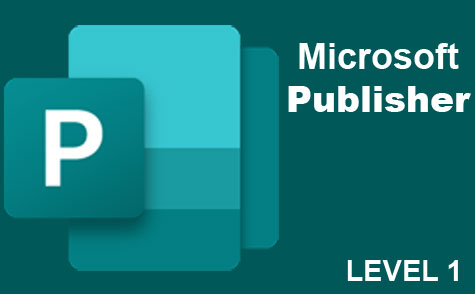 6 hours
0.6 CEUs
Microsoft Publisher Level 1
+ More Info
6 hours
0.6 CEUs
Microsoft Publisher Level 1
+ More Info
-
 4 hours
0.4 CEUs
Slack
+ More Info
4 hours
0.4 CEUs
Slack
+ More Info
-
 7 hours
0.7 CEUs
Understanding Financial Statements
+ More Info
7 hours
0.7 CEUs
Understanding Financial Statements
+ More Info
-
 32 hours
3.2 CEUs
Accounting & Bookkeeping 101 for Everyone
+ More Info
32 hours
3.2 CEUs
Accounting & Bookkeeping 101 for Everyone
+ More Info
-
 8 hours
0.8 CEUs
Quicken Tutorial: All Versions
+ More Info
8 hours
0.8 CEUs
Quicken Tutorial: All Versions
+ More Info
-
 6 hours
0.6 CEUs
Google Docs
+ More Info
6 hours
0.6 CEUs
Google Docs
+ More Info
-
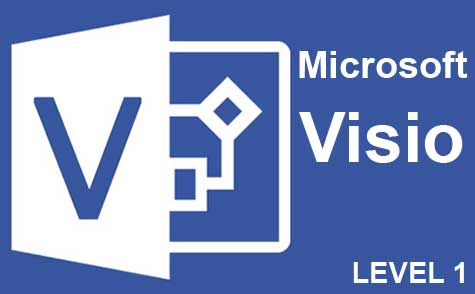 7 hours
0.7 CEUs
Microsoft Visio Level 1
+ More Info
7 hours
0.7 CEUs
Microsoft Visio Level 1
+ More Info
-
 7 hours
0.7 CEUs
Google Slides
+ More Info
7 hours
0.7 CEUs
Google Slides
+ More Info
-
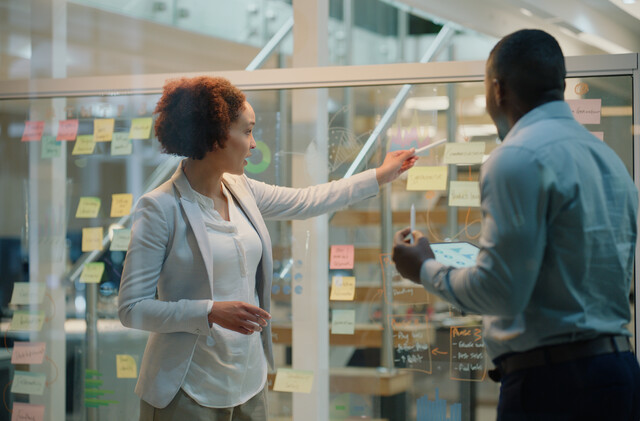 7 hours
0.7 CEUs
Introduction to Logic
+ More Info
7 hours
0.7 CEUs
Introduction to Logic
+ More Info
-
 5 hours
0.5 CEUs
Habits of Millionaires
+ More Info
5 hours
0.5 CEUs
Habits of Millionaires
+ More Info
-
 6 hours
0.6 CEUs
Computer Literacy Level 2 - Internet Basics
+ More Info
6 hours
0.6 CEUs
Computer Literacy Level 2 - Internet Basics
+ More Info
-
 6 hours
0.6 CEUs
Cybersecurity 101
+ More Info
6 hours
0.6 CEUs
Cybersecurity 101
+ More Info
-
 5 hours
0.5 CEUs
Microsoft Outlook Level 1
+ More Info
5 hours
0.5 CEUs
Microsoft Outlook Level 1
+ More Info
-
 8 hours
0.8 CEUs
Microsoft PowerPoint Level 1
+ More Info
8 hours
0.8 CEUs
Microsoft PowerPoint Level 1
+ More Info
-
 7 hours
0.7 CEUs
Computer Literacy Level 1 - Computer Basics
+ More Info
7 hours
0.7 CEUs
Computer Literacy Level 1 - Computer Basics
+ More Info
-
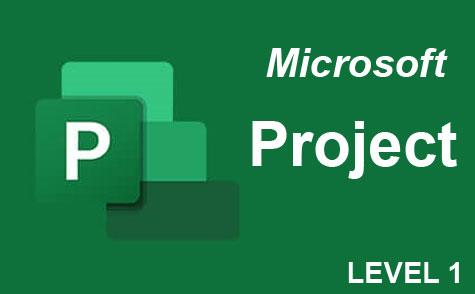 9 hours
0.9 CEUs
Microsoft Project Level 1
+ More Info
9 hours
0.9 CEUs
Microsoft Project Level 1
+ More Info
-
 7 hours
0.7 CEUs
Google Sheets
+ More Info
7 hours
0.7 CEUs
Google Sheets
+ More Info
-
 7 hours
0.7 CEUs
Microsoft Word Level 1
+ More Info
7 hours
0.7 CEUs
Microsoft Word Level 1
+ More Info
-
 6 hours
0.6 CEUs
Computer Literacy Level 3 - Living and Working Online
+ More Info
6 hours
0.6 CEUs
Computer Literacy Level 3 - Living and Working Online
+ More Info
-
 14 hours
1.4 CEUs
QuickBooks Online
+ More Info
14 hours
1.4 CEUs
QuickBooks Online
+ More Info
-
 8 hours
0.8 CEUs
Learn HTML - Create Webpages Using HTML5
+ More Info
8 hours
0.8 CEUs
Learn HTML - Create Webpages Using HTML5
+ More Info
-
 6 hours
0.6 CEUs
Debt Reduction
+ More Info
6 hours
0.6 CEUs
Debt Reduction
+ More Info



